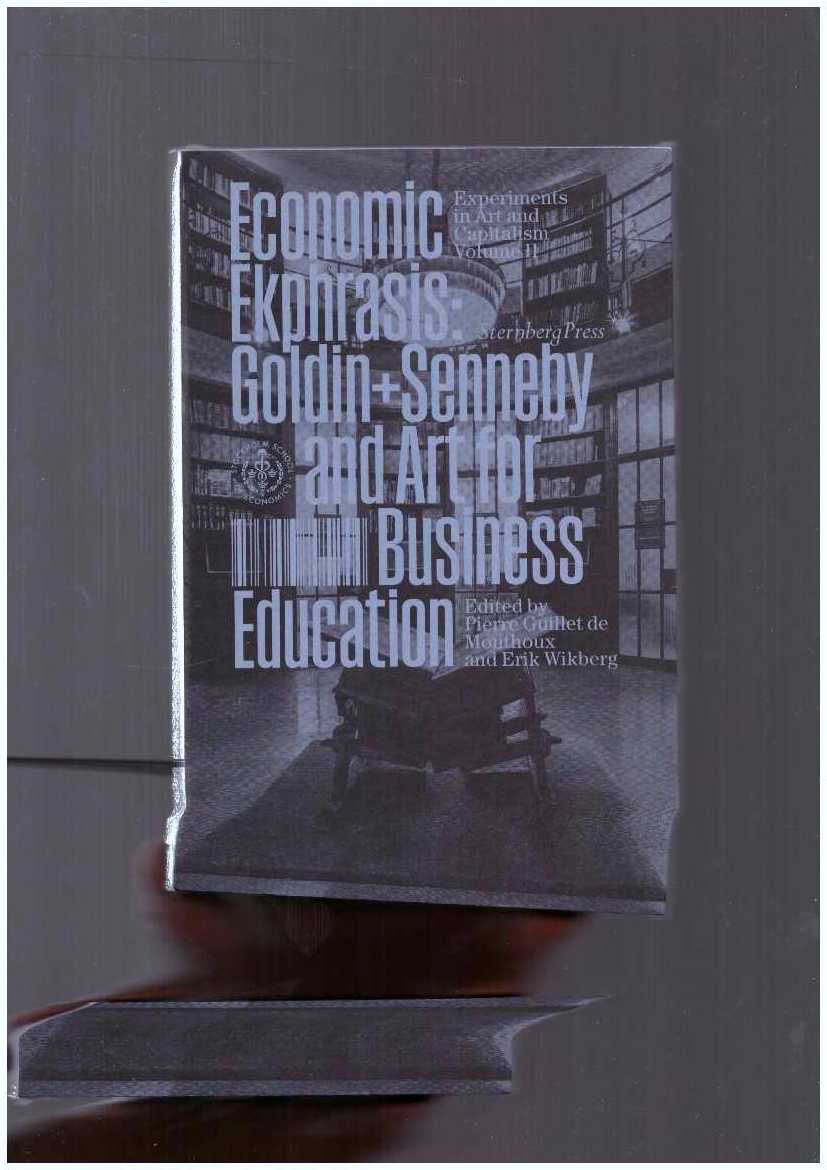GOLDIN+SENNEBY; GUILLET DE MONTHOUX, Pierre (ed.); WIKBERG, Erik (ed.)
Economic Ekphrasis. Goldin+Senneby and Art for Business Education
What happens when social scientists write about artworks? How does it affect the academic environment of a business school and how does it change the perception of art? Can it be used as a novel scientific method in the business studies? This book investigates these matters by analyzing Goldin+Senneby's retrospective exhibition “Standard Length of a Miracle” set up in Tensta konsthall and multiple other venues in Stockholm in the spring of 2016.
Pierre Guillet de Monthoux and Erik Wikberg define the concept of Economic Ekphrasis as “a literary description of or commentary on a visual work of art as a research-educational method in the social and economic sciences.” While the use of ekphrases goes back to ancient times in our Western literary canon and practiced by authors such as Homer, Fyodor Dostoyevsky, Charlotte Brontë, and Oscar Wilde, it is new and unexplored territory for social scientists at business schools. An easy way to understand how to write literary ekphrases in its original meaning would be to ask a seeing person to describe in words a visual artwork to someone who is blind. Economic ekphrasis instead is about describing artworks for people who are blind to economic concepts and ideas, making them see what they did not see before. [publisher’s note]
Texts by Clare Birchall, Ismail Ertürk, Marie-Louise Fendin, Jonas Hassen Khemiri, Katie Kitamura, Maria Lind, Pamela Schultz Nybacka, Anastasia Seregina, Örjan Sjöberg, Emma Stenström, Brian Kuan Wood.
Published by Sternberg Press, 2021
Design by Ronnie Fueglister
Artists' Books / Economy
